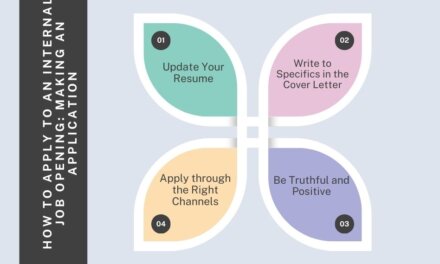In the fast-moving world of real estate, transaction coordinators often keep track of everything involved in the process of a real estate transaction. From paperwork to maintaining coordination between people, this job requires flawless organizational and communication skills. Trello is one such popular project management tool that can revolutionize the task of transaction coordinators. In this article, learn seven best steps on how to use Trello for transaction coordinators—ways through which you will get your workflow streamlined and drive out efficiency.
Table of Contents

What is Trello, and what is it for?
Before diving into the nitty-gritty of how to use Trello for transaction coordinators, let’s step back to talk about how to make the most of the platform. What is Trello used for? Trello is a visual project management tool that uses boards, lists, and cards to help users keep track of tasks and projects. It’s flexible, easy to use, and can be customized to fit all sorts of workflows, including how to use Trello for transaction coordinators.
Key Features of Trello:
- Boards: Represent the whole projects or areas of work.
- Lists: These can be regarded as best steps or lists in a project.
- Cards: A single task or item of a list.
1. Setting Up Your Trello Board for Transaction Coordination
The very first step in using Trello as a transaction coordinator will be to set up your Trello board. This board is going to be the central hub for any transaction-related tasks and information.
How to set up your Trello Board:
- Create a New Board: Make a new board that will be used only for transaction coordination, and name it “Transaction Coordination—[Your Name/Company].”
- Add Lists: Create lists for the various stages that happen during a real estate transaction, like “New Leads,” “Under Contract,” “Closing Prep,” and “Closed Transactions.”
- Create Cards: Create a card for each transaction in the appropriate list. The card should include the property address, the names of clients, and crucial dates or deadlines.
2. Customizing Cards for Itemized Transaction Management
All of the details of each transaction will live inside the Trello cards. Customizing those cards will ensure you have all relevant information at your fingertips.
Best Practices for Card Customization:
- Checklists: Add checklists inside cards for tasks such as attaining signatures, scheduling inspections, or sending documents to the lender.
- Labels: Cards can have color codes assigned to different transactions, urgencies, or status, such as “High Priority” or “Pending Approval.”
- Due Dates: Assign due dates to cards so very important deadlines are not missed. Trello will send reminders when a deadline is drawing near.
3. Using Trello for Collaboration Among Real Estate Agents and Clients
Effective transaction coordination requires effective communication. Trello offers an easy way to work with real estate agents and other parties.
How to Use Trello with Clients and Agents:
- Invite Team Members: Add the real estate agent and client as members of your board, or even to individual cards, so that they can see the progress, add comments, and know how things are flowing.
- Comments and Mentions: Get your team engaging in the comment section on the cards, and mention users specifically with “@” to notify them of key updates or questions.
- Attachments: You can share key documents right inside Trello cards to ensure everybody has the paperwork needed.
4. How to Handle Multiple Transactions Efficiently Using Trello
One of the huge challenges for Transaction Coordinators is keeping track of multiple transactions at one time. How to use Trello for transaction coordinators is a solution to this problem, as Trello’s organizational features can help you stay on top of each deal.
How to Manage Multiple Transactions:
- Separate Boards: If you handle a large number of transactions, you may want to have a separate board for different clients or types of transactions, such as residential vs. commercial.
- Automation: Utilize Trello’s automation feature, Butler, to create rules that automate moving cards between lists or adding due dates when certain triggers take place—for example, moving a card to “Under Contract.”
- Calendar View: This power-up will allow you to see all your transaction deadlines in one view. This will easily allow you to keep track of key dates across multiple transactions.
5. Progress Tracking and Reporting in Trello
With the visual interface, it becomes easy to track the progress of every transaction. Reports can be generated for updating stakeholders.
How to Track and Report:
- Progress Tracking: The visual movement of the cards across lists simulates the progress of the transactions. This will let you and your team know in a second the status of every deal.
- Reporting: It has export features so one can generate reports of transaction status. You can export board data to CSV format for further analysis or sharing with clients.
- Power-Ups: Consider using power-ups like “Trello Reporting” or “Trello for Google Sheets” to create detailed reports and dashboards that track your performance over time.
6. Integrating Trello with Other Tools for Seamless Workflow
While Trello is an independent powerhouse on its own, it’s able to integrate with many other tools that take workflow integration to a whole new level.
Transaction Coordinators’ Top Integrations:
- CRM Systems: The biggest point to note about using Trello for this would be that it is not a CRM system on its own, but it can integrate with your CRM so that you can keep track of your leads and client interactions. Tools like Zapier make integrating Trello with such popular CRMs as Salesforce or HubSpot quite easy.
- Email: Either use the Trello add-on for Gmail or Outlook, and turn emails into Trello cards with one click. This will ensure that everything from emails about requests to updates gets sucked into your workflow.
- Real Estate Tools: Integrate Trello with real estate tools like DocuSign for seamlessly signing documents or property management systems for greater coordination.
7. Conquering the Disadvantages of Trello
Although Trello is great, it also has some drawbacks. Knowing and finding ways around these can help you maximize this platform’s use.
Common Trello Disadvantages and Ways to Avoid Them:
- Limited Features in Free Version: Not many features are available in the free version. This has a limited number of Power-Ups and Integrations. If you want more, you could use Trello Gold or upgrade to Trello Business Class.
- Jam-Packed Boards: In case your board gets too full with a number of lists and cards, then it may get very hard to manage. Clean up your board and regularly archive the cards that are complete to help keep it organized.
- Inadequate Advanced Reporting: Trello natively has limited reporting. By integrating Trello with third-party reporting tools or through its API, there can be much richer reporting.

Questions They May Ask:
What to Anticipate in a Job Interview for a Transaction Coordinator Applying with Trello Experience
If you are applying for a transaction coordinator job and you have used Trello in your workflow, you might encounter particular questions about the experience with the platform.
You might be asked:
- How have you used Trello to manage multiple real estate transactions simultaneously?
- Answer: Describe how you set up boards, lists, and cards to follow up, track deadlines, and collaborate with real estate agents and clients. Emphasize specific features or power-ups used to make your workflow smooth.
- Can you explain how you customized Trello to fit your transaction coordination needs?
- Answer: Provide a concrete example of how this might be accomplished using Trello, including creating custom labels, setting up automation rules with Butler, and integrating Trello with other tools, such as a CRM or email client.
- What are some problems you have had while using Trello? How about how you remedied them?
- Answer: Mention any kind of limitations you may have faced, such as overcrowding of boards or limited reporting, and further explain how you handled these to maintain an effective workflow.
FAQs: Common Questions About Using Trello for Transaction Coordination
1. How do you keep track of tasks within a real estate transaction in Trello?
Answer: You will create a board in Trello and then several lists that mirror the flow of how to use Trello for transaction coordinators. An example would be New Leads, Under Contract, and then Closing. Create a card for each transaction. Then, you have checklists, due dates, and labels to track tasks and progress, demonstrating how to use Trello for transaction coordinators effectively.
2. Is Trello a CRM system?
Answer: No, Trello is not a CRM. However, the tool can be integrated with CRM tools like Salesforce or HubSpot to help drive customer interaction and lead management.
3. How to handle projects using Trello for transaction coordination?
Answer: Use boards, lists, and cards in Trello to organize and track tasks of each transaction. Add on power-ups and integrations for process automatization, managing deadlines, and stakeholder engagement.
4. What are some of the cons of using Trello for transaction coordination?
Answer: A few of the cons include the limited features of the free version, overcrowding of boards, and no advanced reporting. Consider upgrading your plan, cleaning up your board regularly, and integrating with other tools to fix these issues.
5. Explain best uses of Trello as a real estate agent and transaction coordinator?
Answer: Create personalized Trello boards based on your workflow; use Butler for automation; integrate with CRM systems; have timely updates and organization of your boards so that you keep track of all transactions efficiently.

Conclusion: Mastering Trello for Transaction Coordination
Using Trello as a transaction coordinator can be extremely helpful in keeping your real estate transactions in line and organized, especially when you understand how to use Trello for transaction coordinators. You will be able to simplify the workflow with custom boards, collaboration, and integrations that ensure each transaction is processed exactly as needed, showcasing how to use Trello for transaction coordinators effectively.
Whether you are new to Trello or an old-timer looking to really set up camp, these 7 steps on how to use Trello for transaction coordinators will help you on your way in wringing all the potential from this multifaceted tool. Armed with the right strategies, Trello could become part of your transaction coordination process, keeping you organized and timely while offering second-to-none service for clients, highlighting how to use Trello for transaction coordinators effectively.











